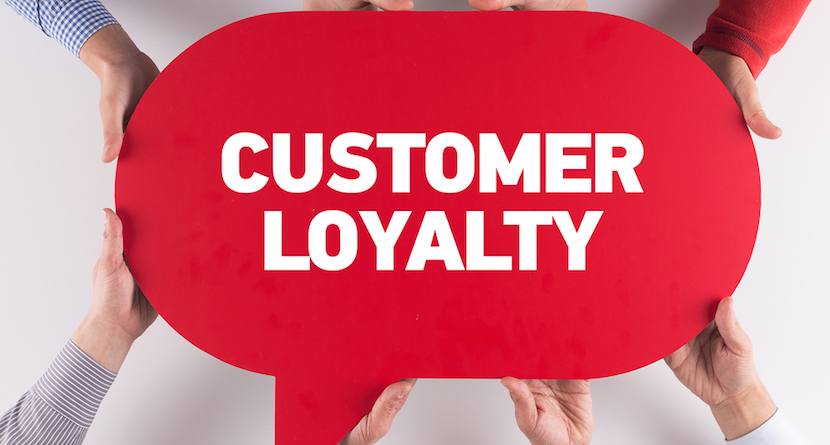Over the past two columns, I’ve relayed some of the more salient ways in which golf facilities and other customer facing organizations can harness the power of databases and loyalty marketing principles to forge stronger relationships with best customers. Today, digital technology has made this process of behavioral and attitudinal integration so much simpler. Several of the research and marketing programs that we’ve created with hospitality and professional sports team clients have leveraged the insights collected through these advances to yield effective and targeted marketing communications that recognize and reward desired consumer behavior, while building strong communities of best guests that become viral evangelists for the sponsoring properties. It was nowhere near as easy twenty-five years ago, when fresh out of the Wharton MBA program, I was tasked with developing and test marketing what may have been the first multi-pronged loyalty marketing program in the golf business.
I arrived at PGA of America headquarters wide eyed to jump head first into a marketing vision that had captured significant enthusiasm. This was the era where shifting channel dynamics had spawned the first of the multi-door golf specialty shops. As the majority of both hard and soft goods sales had moved away from green grass channels there was significant competitive disadvantage for PGA Golf professionals. While a dwindling handful of industry suppliers sought to maintain green grass only distribution, it was apparent that consumer sentiments were also shifting towards the price and product breadth advantages afforded by the volume purchasing category killers. Rank and file, independent PGA golf professional were unable to compete effectively on those terms.
What was left in terms of competitive differentiation for green grass facilities, was a proximity of access and the notion that a more personalized relationship could be leveraged between golf professional and golfer. Of course there were still challenges of consistent service delivery and perceived value that needed to be overcome, and that’s where we surmised we might be able to achieve certain unrealized economies of scale by delivering centralized communications, recognition, community and reward (The 2C2R principles that I covered last week) elements to drive sales back to on course golf shops.
The test program that we developed, was in hindsight, significantly ahead of its time. Conceptually, Club PGA was a brilliant concept. Golfers would earn points for purchases made in their home golf shop and through a series of golf merchandise and non endemic sponsors that awarded bonus points for the purchase of their products and services. PGA professionals would sign up their members or frequent players who would receive a PGA branded plastic wallet card and a series of personalized communications including a magazine and point statement each month. Golfers would redeem their points, as desired for more merchandise.
As enticing as the concept appeared, in practice there were significant obstacles. Hard as it is to fathom today, in 1994 the internet was in its dial-up infancy. Electronic data interchange had not been widely or uniformly deployed. Many golf shops lacked formalized inventory management systems and literally still used stand alone cash registers or more primitive systems (shoe or cigar boxes full of receipts and cash) for transaction management. Credit card processing was handled through mechanical devices that took a physical imprint of the raised customer information on the front of the card using carbon paper, batched these physical chits at the end of the week, then snail mailed them to service bureaus who tabulated and prepared hard copy statements. This was the environment through which we needed to create a uniform mechanism to service PGA members and integrate a national, multi-door loyalty program. The operations were a daunting task.
But operational challenges were just the start. Building and funding a points infrastructure to yield attainable and meaningful rewards was an even greater hurdle. Navigating around commerce laws like The Robinson-Patman Act, which prohibited endemic sponsors from offering one class of merchant (in this case, green grass shops) what equated to special pricing not available to all of its merchant customers required more creative approaches for points accumulation and redemption. Some consumers were hesitant to carry additional cards in their pockets. Convincing potential sponsors to fund portions of the point values was easier said than done. But perhaps the greatest hurdle was the significant amount of training and manual processing work required of participating golf professionals, already pulled in too many directions by their day to day responsibilities.
Amazingly, Club PGA was successful in a number of the test facilities that made a concerted effort to navigate through the manual processes. But in 1994 it was clearly not scalable. Despite the leaps and bounds we’ve made technologically, it still might not be scalable today.
My two plus years of work on this program were often nerve wracking but always educational. The wet behind the ears, newly minted Wharton MBA got a thorough first hand look at pragmatic realities inherent in the fragmented golf facility industry. These remain a challenge for many grass roots national programs today. Club PGA demonstrated how attainable, frequent and “soft” rewards, as well as the other 2C2R elements are tantamount to creating compelling customer relationships. But as importantly, it demonstrated the significant accomplishment that can be made through hard work and a commitment to collecting and smartly leveraging consumer insight.




